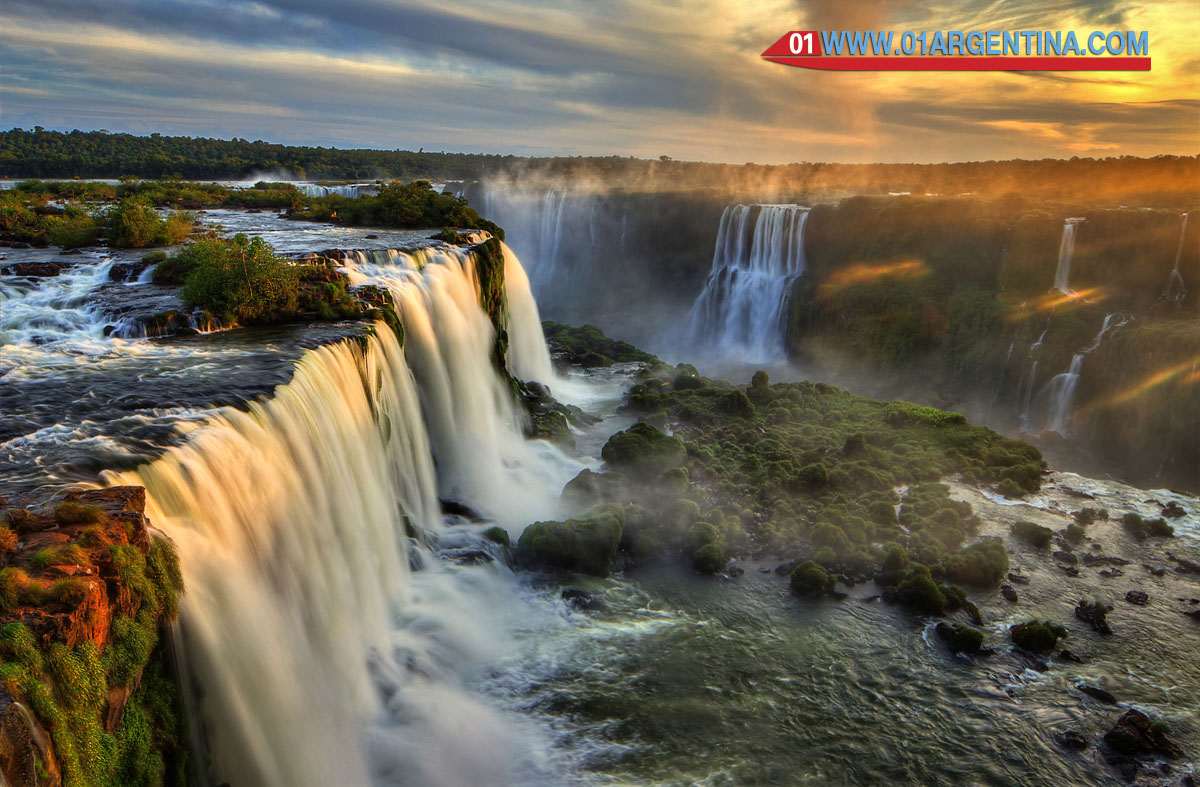 The weather in Iguazu Falls:
The weather in Iguazu Falls:
This article offer useful information about the Iguazu Falls so that you can plan your trip before travellling.
Let’s start talking about the weather.
Although the area of the Iguazu Falls have a subtropical climate, in winter there are days that are cold (when the south wind blows). Therefore if you travel in winter it is always good to bring a coat.
During the summer there are extremely hot days, people who are not accustomed to extreme heat can suffer heat stroke, dehydration, sunstroke, etc. You should drink plenty of fluids.
As one of the top tourist destinations in South America, Iguazu Falls receive tourists throughout the year. Except for some specific times of flood in any month of the year you can enjoy this spectacle of nature. However, there are some times more conducive to travel to the falls, according to climate and tourism seasons. We help you plan the best trip date with all the information about when to go to Iguazu Falls.
Iguazu Falls: seasons
Weather Iguazu Falls is humid subtropical jungle itself. Summers are very hot while autumn, winter and spring have mild days. The differences in temperature and rainfall between the four seasons are not too sharp, so the weather is not any decisive impact on the decision of when to go to Iguazu.
However, it is important to note that during the winter months can be cool days (average temperatures of 15 ° C), so be sure to bring a jacket. In summer (December to March) temperatures can become stifling (average maximum 32 ° C) for those not used to the heat and humidity; It is recommended to consume plenty of water to stay hydrated.
Although the rains are distributed fairly evenly throughout the calendar, there is more rainfall in the period between October and March. In December and January it is when the water flow reaches the highest levels.
Peak seasons in Iguazu Falls coincide with the dates of stay in the region. Easter, the July holidays and year-end holidays are times with high influx of tourism, so booking is advisable packages, tours and accommodation well in advance.
As for the weather, March, April and May are considered the best time to travel to Iguazu Falls, as the rains fall and temperatures are moderate and pleasant. However, those who want to avoid the crowds should target away from the Easter holidays or weekends date.
Summer
December to March very hot weather for 24 hours a day, due to temperatures and / or very high humidity
Autumn
March-June
Quality time during the day; fresh cold nights
Winter
June-September
Nice at noon and in the early afternoon time; cool during the day, cool nights
Spring
September to December
Very hot at noon and in the early afternoon time; pleasant mornings and evenings; nights pleasant cool.
How long?
You make the most of Falls will take three days, but if you want to meet other attractions of the province, you should think about a week at least.
We suggest the new tourist package that includes the Jesuit ruins.
Note that planes usually arrive after noon, so it actually mean three days suggested 3 nights.
There are different seasons with mass influx of tourism, both nationally and internationally.
High season is Easter par excellence, after the school holidays in July and by year-end increased influx of international tourism is observed.
The long weekends are a good choice.
All year round you can visit the Falls
Winter is irregular, as in the whole planet earth, abnormal behavior observed climate, with high temperatures outside time.
The same applies to the rain.
What are the most important attractions?
While there are many typical options for entertainment, obviously the most important options have to do with the exuberant nature of the region.
Iguazu Falls is to appreciate and enjoy the peace and tranquility of the silence of the forest or the energizing sound of rushing waters from above.
The Iguazu National Park (Argentina), or the Argentine side of the Falls
Recently renovated, it offers new gateways, comfort and internal transport in environmentally train to appreciate nature. (8 hour visit by all walks available)
The Iguazu National Park in the northern province of Misiones, was established on October 9, 1934 and currently has an area of 66148 ha.
Different areas make up this wonderful nature refuge and it is in the Falls, where you can make visits to contemplate the waterfalls of the Iguazu River Area.









